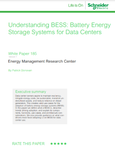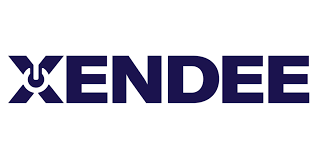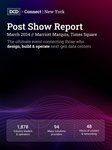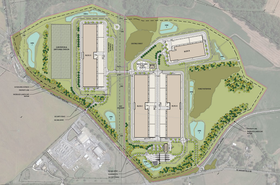Software firm Xendee is working with the University of Illinois Urbana-Champaign (UIUC) to develop a platform to help data centers integrate distributed energy solutions such as microgrids and small modular nuclear reactors (SMRs).
The company, which runs a design and operation platform for distributed energy systems, has teamed up with researchers in the Department of Nuclear, Plasma, and Radiological Engineering (NPRE) at the university for a project that is supported by the US Department of Energy's Office of Electricity Microgrid Program.
Together they will develop a phased approach to providing local power to data centers through microgrids. This approach, Xendee claims, will allow for existing renewable and low-carbon generation technologies to be used by data centers, while allowing newer and more efficient technologies such as SMRs to be added to the energy mix at the right times.
“This flexibility is key to a smooth evolution as we move toward the ultimate goals of sustainable power generation and efficient operation of data centers,” the company said.
Access to power is a key challenge for data centers in the US and other markets around the world. Demand for electricity from US data centers is expected to reach 35GW by the end of the decade, more than double its 2022 level.
Because of this, operators are increasingly looking to alternative set-ups such as dedicated microgrids, which can be powered directly by renewable energy sources such as solar or wind. SMRs are also seen as a potential solution to provide large amounts of power to data center campuses, but the technology is still at a nascent stage.
“In the right situations, the economics of a nuclear-powered data center microgrid are very promising, particularly when optimized through component sizing, deployment planning, and coupled with renewables and energy storage,” said Dr. Timothy Grunloh, NPRE principal research scientist at UIUC. “And our partnership with Xendee enables us to dig into the details of optimality based on varied, and sometimes conflicting, objectives of economics, reliability, and decarbonization.”
The initial phase will see distributed energy resources, such as storage and cooling technologies, analyzed alongside generation technologies such as fuel cells, and combustion engines that run on fossil fuels, hydrogen, or biofuels.
Xendee will use historic data on the power supply and operating environment of UIUC’s Blue Waters supercomputer, which was decommissioned in 2021, to create a framework capable of optimizing data center configurations for power supply in a microgrid context and parameters for power and heat management systems. The framework will be used to analyze the power and heat requirements of different types of data centers.
In the second phase of this project, the framework established on the Xendee platform will be used to introduce power from advanced nuclear technology and scenarios for its contribution to reliable, resilient, and carbon-free power for data centers.
“Xendee’s collaboration with UIUC brings access to historical operating data for real power and cooling from the facility that hosted the leadership class Blue Waters supercomputer located at the National Center for Supercomputing Applications on UIUC’s campus, enabling us to run real-world optimization analyses,” said Dr. Michael Stadler, CTO and co-founder of Xendee. “And following the Blue Waters supercomputer, the NCSA created the Delta supercomputer which is now being built out with an AI focus, giving us an excellent case to work with over time.”
Delta launched in 2022 with six petaflops of compute power. In 2023, UIUC was awarded a $10 million grant from the National Science Foundation to create an AI partition for the machine powered by Nvidia H100 GPUs.
More in Critical Power
-

-

Sponsored The race to reduce UPS runtime
-




